GORP

65 metres deep Into the depths with freediver
Georgina MillerNasty comedown
The mess festivals leave behind

Jelly babies
UK beaches invaded by sea stingers


65 metres deep Into the depths with freediver
Georgina MillerNasty comedown
The mess festivals leave behind

Jelly babies
UK beaches invaded by sea stingers
Summer 2023
£4.50
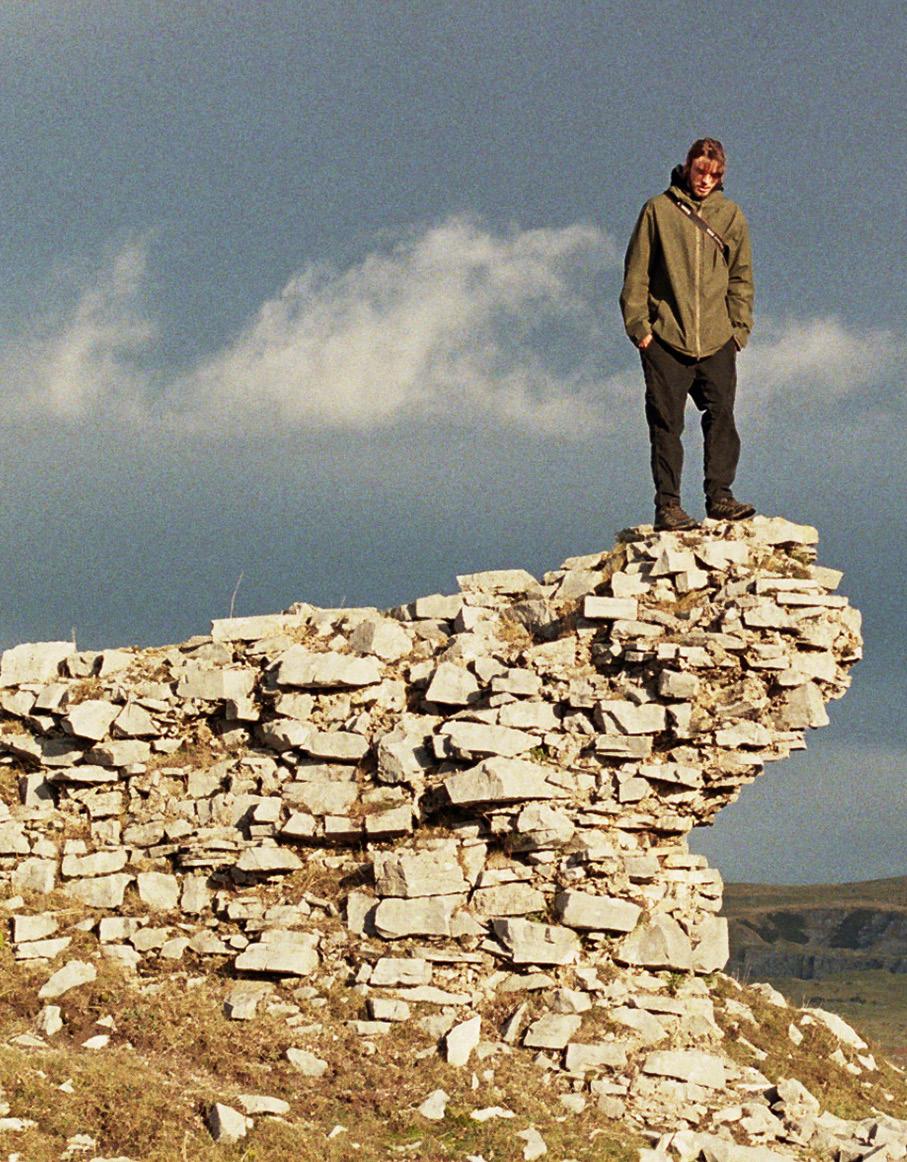
Everyone has a nostalgic memory of summer. The warm summer breeze, the scent of freshly chopped grass, the sound of soft speakers and chatter in the park, playing cards on a mild evening; you get the gist. As always, we want to encourage you to get out there, and with this being the pathfinder issue, it’s the perfect opportunity to step out of your comfort zone and try something new.
The perfect place to start is with our pull out pages (p.11). This is jam packed full of phone free activities that you can easily do in your back garden or on your next adventure. Get the tunes on with one of our GORP playlists, and munch away on our summertime trail mix (p.14).
Summertime goes hand in hand with festival season. We are excited, you are excited, everyone is excited, but maybe all this partying is damaging the environment? Learn how to be a more sustainable festival goer on (p.15).
If you do want to step out of your ‘comfort pit’ as Bear Grylls calls it, there’s no better way to start than diving head first with our freediving expert as she gives tips for beginners (p.20). Or perhaps you’ve considered trying out paddleboarding, but is it really as easy as it looks? Find out on (p.6). Watch out when you fall in the water though, as it seems we have an invasion of jellyfish heading our way, find out more on (p.22).

If you prefer to remain on dry land, this issue also features hiking and foraging tips, from both an influencer and a complete novice (p.6 and p.10), as well as new recommendations for your next holiday (and no it’s not Greece or the Canary Islands), (p.5) and the latest in gorpcore fashion (p.8).
And finally, If you’ve ever felt like the outdoors wasn’t accessible to you, one of our writers chats to an LGBTQ+ walking group, aiming to change that (p.21).
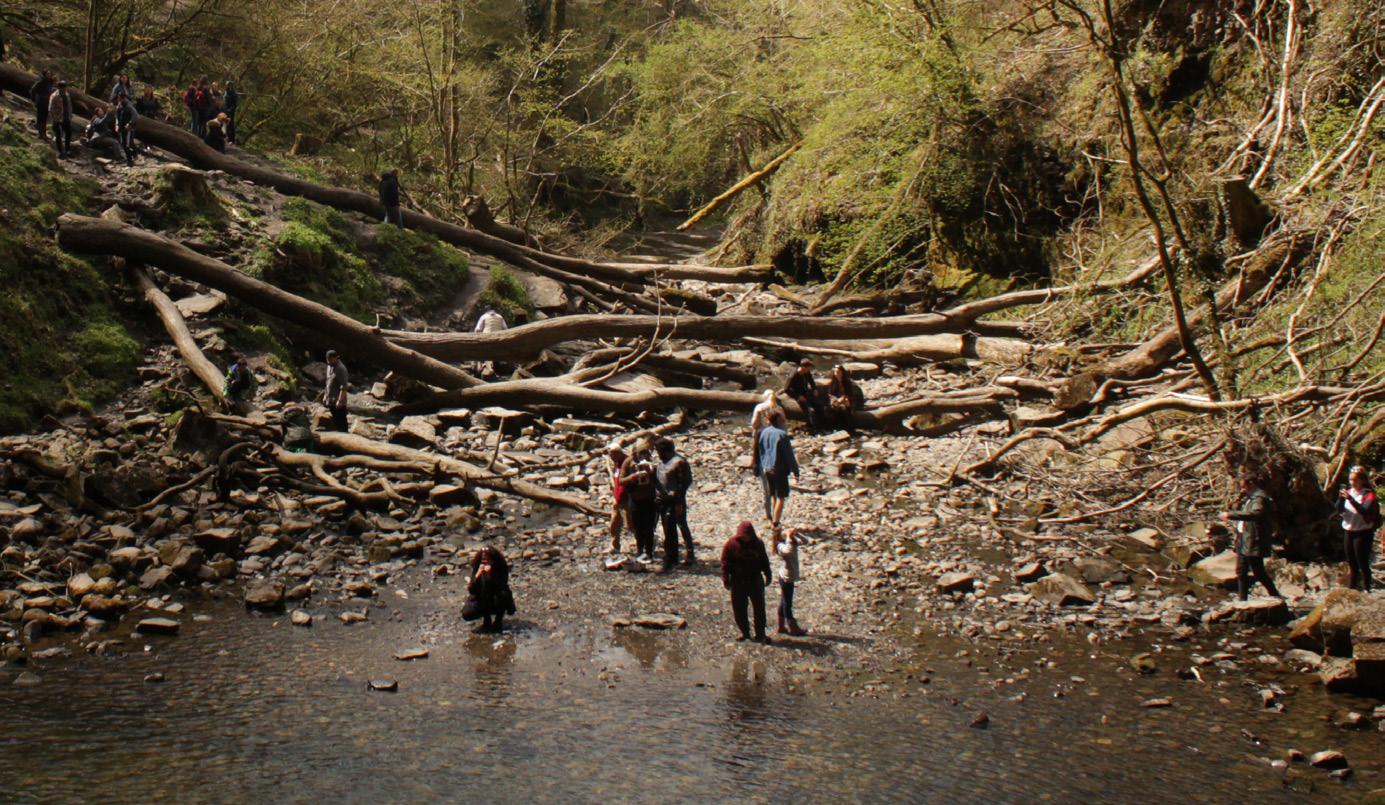
This month, in our podcast The Great Out There, the GORP team became modern day Indiana Jones’ and got involved with geocaching.
We hope this issue encourages you to take a different path and inspires you to embrace the summer and get out there.
By Maggie Gannon and Tianna WilliamsCONTENT
EDITOR Maggie Gannon
PRODUCTION EDITOR Tianna Williams
Inga Marsden Manon Jones
CRAFT EDITOR Grace Nicholls
PRODUCTION EDITOR Holly Chapman
Almha Murphy Ben Jones Matthäus Bridge
COMMUNITY
EDITOR Poorvi Singhal
PRODUCTION EDITOR Robyn Quick
Frances Daniels Erin Zammitt Isaac Murphy
COVER IMAGE BY James Lawson
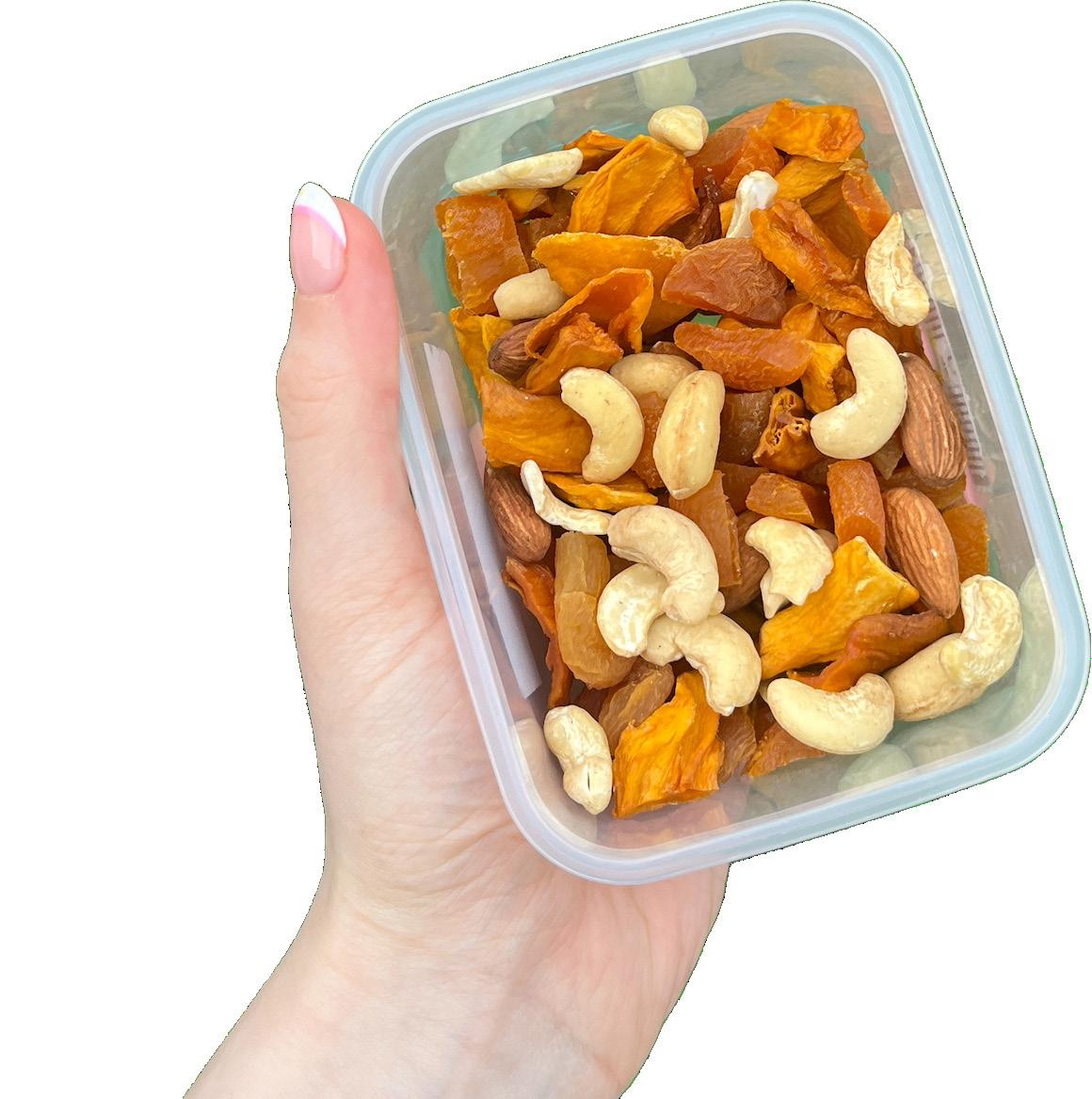
Do you spend too much time on your phone? Head to our pullout on page 11 for some ideas on a screen time out.
how to give free diving a go.



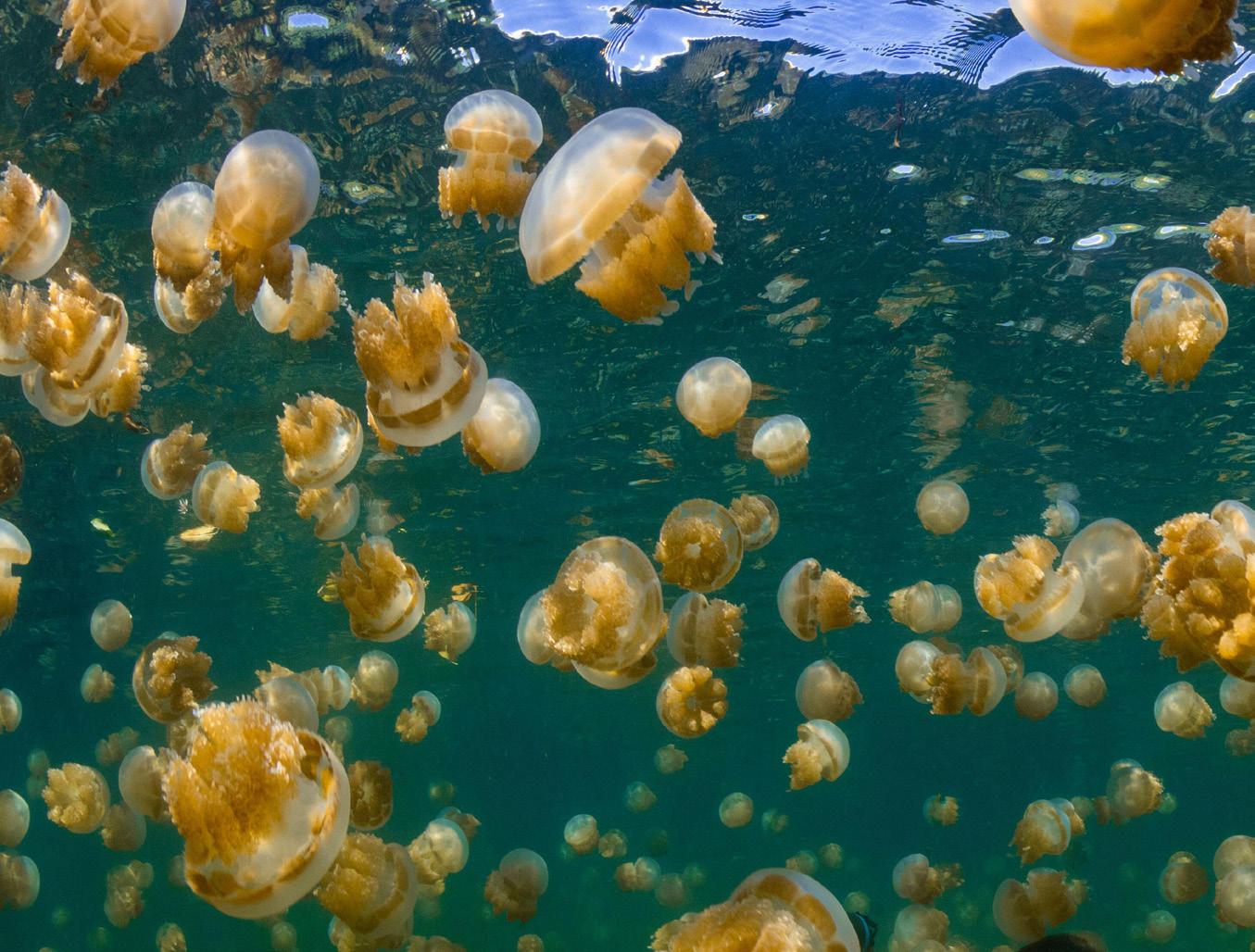


Scan these Spotify codes to listen to our perfectly crafted playlists ideal for a sunny walk in the countryside, on a hike or strolling along the beach.


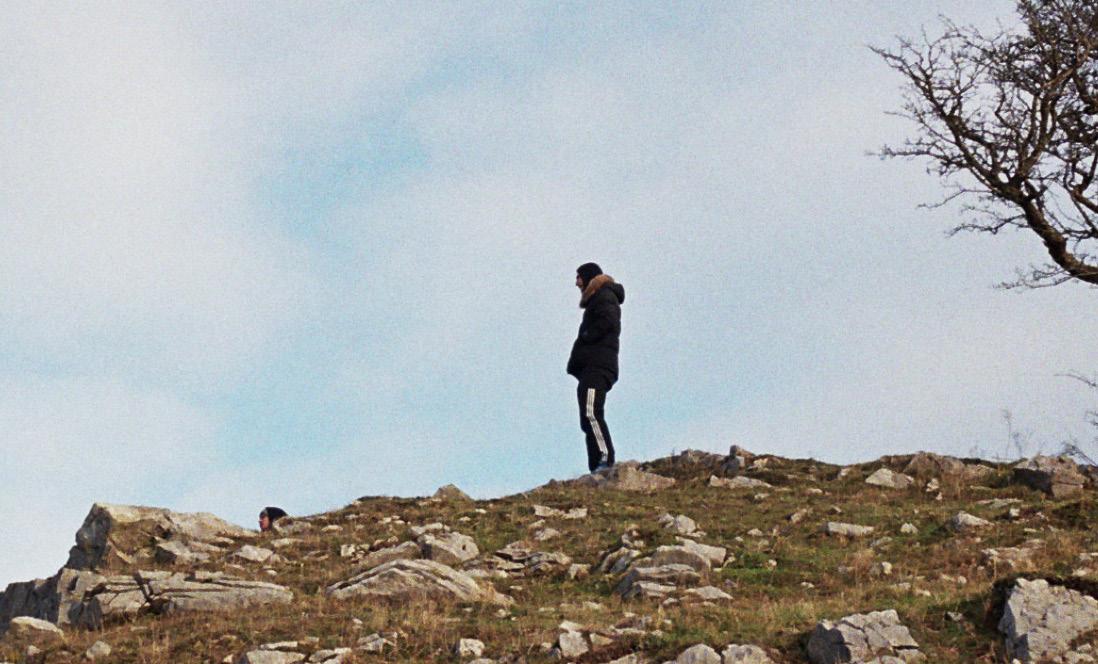
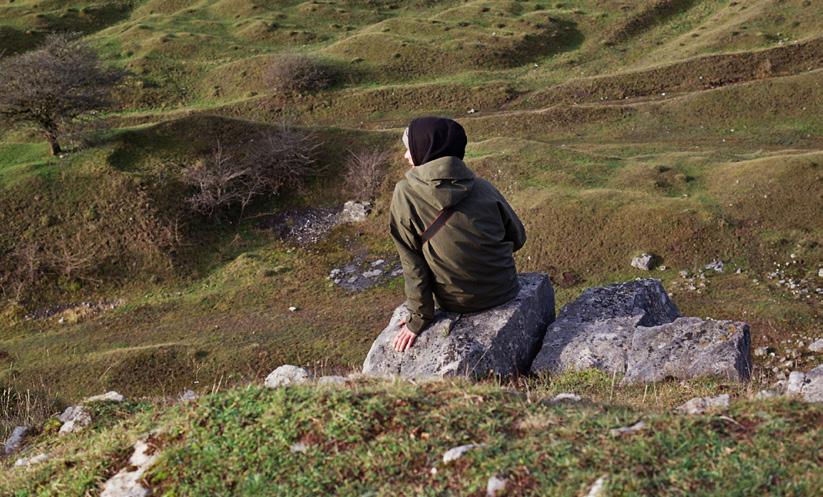


Our main character playlist captures the great songs that make you feel your best so you can confidently strut through the park wearing headphones, in your own little world.
 Festivals should be fun, not littered with plastic. Learn how much our favourite music festivals impact the environment on page 15.
Looking for some summer inspiration? Check out our five summer staples on page 16.
Noticing some jellyfish in UK waters? There is a rising number found on British beaches, head to page 12 to learn more.
Festivals should be fun, not littered with plastic. Learn how much our favourite music festivals impact the environment on page 15.
Looking for some summer inspiration? Check out our five summer staples on page 16.
Noticing some jellyfish in UK waters? There is a rising number found on British beaches, head to page 12 to learn more.
The sun’s out and you’re in luck as we’ve made a playlist for you to enjoy with us. Whether you’re chilling in the park with your friends, driving to the beach with the windows down, or simply reclining in your back garden with a couple of drinks, this mix is sure to get you in the summertime mood.
We want you guys and gals to smell good this summer. So, we’ve done a little bit of searching for what’s hot this season. For her, Estée Lauder Bronze Goddess. “If there are fragrances that smell more like summer than those in the Bronze Goddess line, I’m yet to find them,” says Good Housekeeping beauty editor Fleur Fruzza. For him, Acqua Di Colonia Essenza. “Neroli, citruses, light woods and musk done in the Italian way,” says fragrance enthusiast Marin Kristic.


In our last issue, we recommended sunscreen; this hasn’t changed. However, we’d like to take this opportunity to explain the difference between SPF, UVB,
and UVA. Let’s start with the basics, SPF stands for Sun Protection Factor. The higher the SPF number, the higher the amount of ultraviolet B radiation protection (UVB). Okay, so you know those stars on the back of sunscreen bottles? That’s measured by the amount of UVA (ultraviolet A radiation) protection there is; the higher the star rating, the better the protection.
4 Taste Mint, what can’t it do? This diverse herb can be used in everything from infusing mojitos to garnishing a fruit salad. If the humid weather gets too much this season, add a few mint leaves to your water to keep you hydrated and refreshed. Mint is extremely easy to grow, with a range of delicious flavours to choose from (we recommend mojito mint).

5 Sight Summer of Soul (2021). This epic Oscar-winning documentary, directed by Ahmir “Questlove” Thompson, tells the once-unheard story of the 1969 Harlem Cultural Festival. It’s a must watch, featuring classic performances by the greats: Stevie Wonder, Sly & The Family Stone, Nina Simone, Gladys Knight, BB King, and many

A mystical party held in the middle of the woods, Gottwood Festival is a critically acclaimed, independent music festival in North West Wales. This year the lineup includes: DJ Boring, 4am Kru and James Holden.

When: June 8th - 11th
Where: Carreglwyd, Anglesey, Wales
Price: 1st release £185 (weekend)
Connect Festival, a three-day secluded music event situated in Scotland, has much to offer. It showcases multigenre headline acts, from indie rock to electronic, there is something for everyone. Recent headliners included Beastie Boys, Björk and Franz Ferdinand (of course).
When: August 25th - 27th
Where: Royal Highlands, Edinburgh
Price: £169 (weekend)
Starting as a pocket-sized party in Lancashire,Beat-Herder Festival has now grown into one of England’s biggest parties of the year. Enjoy the sounds of reggae, dub, techno, funk, and psychedelic rock.
When: July 13 - 16
Where: Clitheroe, Lancashire
Price: £230 (weekend)
This list of top picks will have you covered
Our bright and helpful takesPhoto Credit: Anastasia Belousova Photo Credit: Fields of Fantasy
Of all the things that take a backseat amid the cost-of-living crisis, vacations are definitely the first to be sacrificed. But does that mean we bid adieu to one of the few pleasures of life that keep us sane? Absolutely not, because we have staycations to the rescue.
A study commissioned by BLVD hotel in Liverpool revealed that 52% of the 2,000 polling Brits prefer staycations to international travel in the post-pandemic world. As warmer days await, we cannot wait to snorkel in the blue seas, or even get a fresh tan.





As dreamy as it sounds, we somehow associate all our sunny, splashy escapades with the Greek or Canary islands. But have we explored all the scenic islands at home which don’t require breaking the bank and getting on a muscle-scrunching flight?
The clear answer is no. That’s why GORP has curated a list of our top five favourite islands in the UK and Ireland for your next sandy adventure.
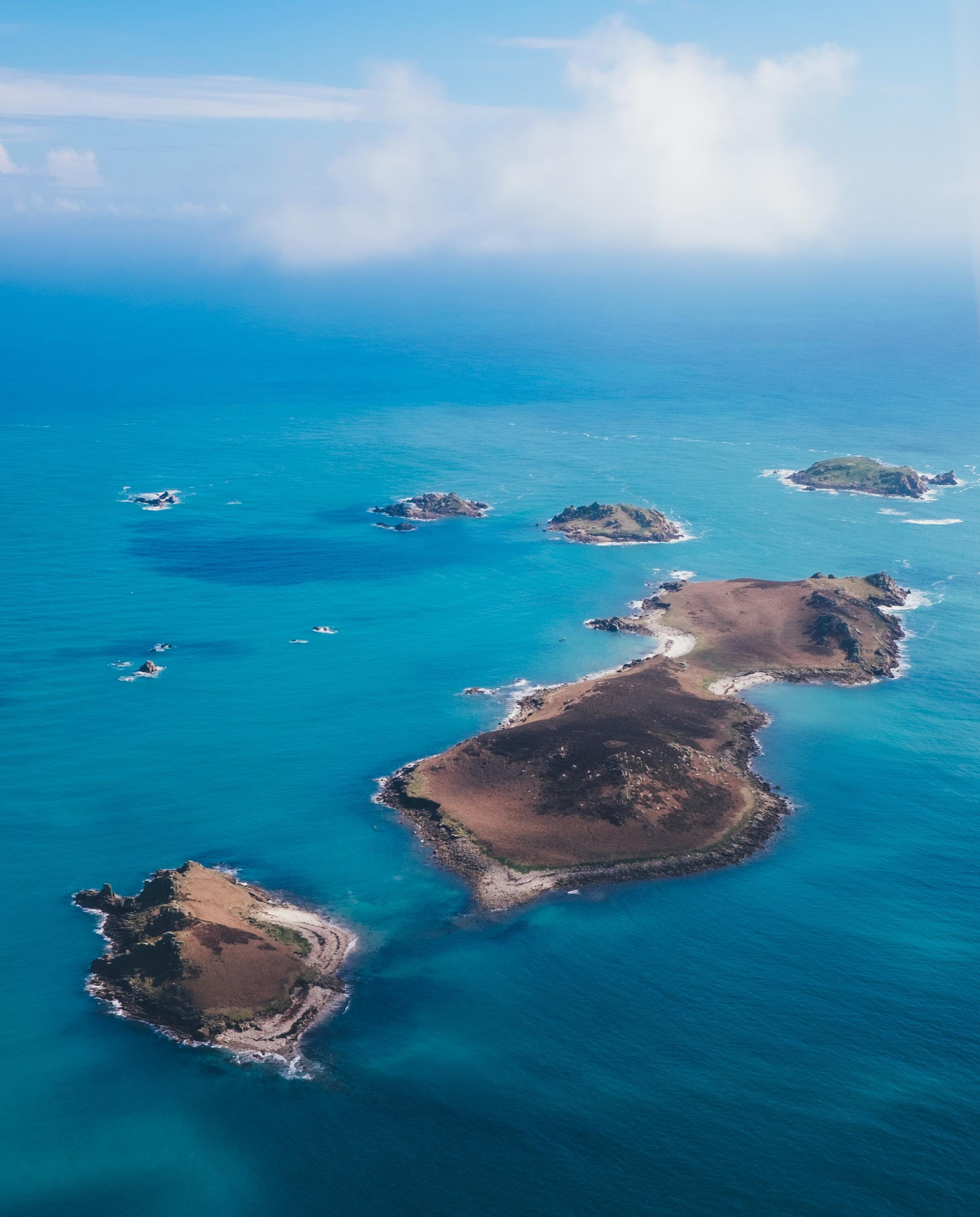
The Isles of Scilly, Cornwall
A beautiful expanse of whitesand beaches, the Isles of Scilly makes for the perfect summer staycation with its rich fauna, seabirds, seals, coastal paths, and indie craft shops. The best part? Even in peak holiday months, the island isn’t as busy as the mainland and you can get a piece of Scilly just for yourself. Plus, when you’re holidaying in Scilly, you’re in an entire group of islands, some inhabited and others abandoned. Why stop at just one?
To get respite from the heat, why not dive into the clear blue waters in the many sheltered coves. If you would rather be on the sea than in the sea, kayaking is the way to go until you reach Bishop Rock Lighthouse.
With 50 miles of rustic landscapes, the Isle of Skye is a haven for all outdoor fanatics like ourselves who enjoy climbing, hiking, water sports, and wildlife spotting.
Trust the Cuillin Hills and the Trotternish Ridges to give you an adventurous go at hiking and mountain climbing. There are also great walks for our less-experienced outdoor enthusiasts. When in Skye, keep an eye out for the whitetailed sea eagle, otters, whales, and seals.
While June and July are the hottest months here, you can expect clear blue skies from April to October. Camping is a must if you’re feeling especially adventurous and wish to sleep under the stars. Otherwise, B&Bs and self-catering cottages work great too.
The biggest island off the coast of Wales, Anglesey, is best known for its dramatic coastline and some of the best beaches in the UK like Porth Wen and Aberffraw Bay. A long walk on the island can win you the most breathtaking looks of uneven cliffs, stretches of golden sand, and the prettiest 19th-century lighthouse – Tŵr Mawr.
When in Anglesey, keep your camera, and more importantly, your eyes, ready for mossy

headlands, grassy dunes, scenic lakes, marshes and woodlands.
Explore the waters while windsurfing, kayaking, and paddleboarding, or you can just bike along the coastline. Choose from guesthouses in quiet harbours, rustic villages and natural landscapes for the best of Welsh hospitality.
The locals are friendly and would often be willing to chat and give recommendations.
With evidence of pre-Roman settlements and history brewing from the Mersea Museum, this island is for culture chasers.
If you want to increase your steps, the round the island walk is a popular 13-mile challenge which will take around three hours for seasoned walkers. Not a professional? Cudmore Grove country park in East Mersea is the place for dilly-dallying, playing with dogs or even flying kites!
While Mersea offers plenty of stay options for all budgets, caravans and tents are popular in the spirit of being in the great out there.
And what are we doing here? Anything from boat trips sailing over the Blackwater River, the Crouch and the Colne, water activities and fossil hunting. Yes, finding shark teeth and other remainws is not uncommon in Mersea.
Do check tide times online as this might affect your journey.
As you enter the harbour, you’d be spellbound by the majestic sandy beach fit for swimming. What’s also a must-visit is the Granuaile castle, The Cove - a small fishing port, sea cliffs perfect for birdwatching, and the Clare Island Abbey — a series of wall and ceiling paintings.
The Clare Island Art Studio is unmissable with its gallery, workshops and class. And if you’re one with a meditative mind, book a yoga, mindfulness, or cookery session at the Macalla Farm Retreat & Yoga Centre. You can also book a sea safari or hire a bike to add a dash more adventure to your staycation.
Staying at Clare Island means choosing between lighthouse-inspired guesthouses, cottages, rentals and B&Bs.
long-haul flights for an island staycation closer to homeThe Isles of Scilly, Cornwall Photo credit: Annie Spratt

With the clocks forward and the winter chill behind us, Brits are tentatively leaving the house without their big coat on. Some are even switching their chunky knit for a slightly thinner jumper.
Spring in London means the tube is getting a little sweatier. Walks on Wimbledon Common and Richmond Park are blighted by having to squeeze onto a packed Victoria line carriage.
With more time spent underground than with London’s flora, my knowledge of plants is embarrassingly poor.
Moving to Wales – which has nearly three times more common land than England – was the perfect excuse to improve my botanical brains, and what better way to know you have got the right plant than by eating it?
The law
Foraging is legally protected in the UK.
The Theft Act 1968 states that you are allowed to pick “mushrooms, flowers, fruit or foliage from a plant growing wild on any land” in most places in the UK, so long as it is for personal use.
There are notable exceptions to what and where you can forage, however, be sure to check for restrictions before you go.
Delicious or deadly?
Wild garlic is common across the UK and is a good entry-level plant to forage. It can be eaten raw and is relatively simple to find if you know what you are looking for. I did not know what I was looking for...


I was also terrified of poisoning myself, so
I used a variety of apps and resources to help find my pungent prize without eating the similarly looking, but poisonous, lily of the valley. That wouldn’t end well at all.
Both have wide green leaves and grow in the same areas. After an hour or so of searching in my local park, which while being in the centre of the city has wild spaces, with my eyes trained to the forest floor I found a cluster of leaves sprouting from the ground.
You can search for a plant by either inputting its name or characteristics.
A hedgerow guide has images of plants in various stages of growth, as well as information on whether it is edible, inedible, or poisonous, each with an icon. You get one guess as to what the icon for poisonous is.
Entries also have a “possible confusion” section, in which I learnt about lily of the valley. The section clearly explains the differences between the entry and its doppelganger. Wild garlic’s stems have one leaf to lily of the valley’s two. So far so good.
The dead giveaway is the smell though: wild garlic simply stinks of garlic.
After a quick whiff, I tore a handful of leaves from the ground, ensuring the roots stayed put, and put them in my mesh pouch: the ones supermarkets sell for fruit and veg.
The PlantNet app asks you to take a picture of a plant to identify it. Once snapped, the app provides a list of plants in order of visual similarity, complete with images to crossreference with your own. Close-up pictures of leaves or flowers yielded the best results.
I took a photo of the leaves with PlantNet and was greeted with an 85% match for wild garlic. I didn’t feel confident enough to rely on imagery alone to stop an untimely death though.
Wild Food UK’s hedgerow guide, available on their website (wildfooduk.com), provided an encyclopedic knowledge of British fauna.

Ingredients serves 2
1 red onion

1 clove garlic
1 carrot
1 celery stick
80g chestnut mushrooms
150g arborio risotto rice
500ml vegetable/chicken stock
Handful of wild garlic
Parmesan cheese
1) Chop and dice the garlic clove, onion, carrot and celery.
2) Add to pan with 1 tbsp olive oil. Simmer on low heat for 3 minutes.
3) Add risotto rice and mushrooms. Simmer for another 3 minutes.
Most of my time in the park was spent searching for wild garlic, as well as photographing anything that looked remotely edible with PlantNet.
It made a refreshing change to traipsing through the park to force some fresh air into my lungs; having a task to do made me feel connected with nature, and although my forage was small, it felt wildly mighty.
4) Add your stock in stages, ensuring rice has absorbed stock before adding more.
5) Finely chop/slice wild garlic.
6) Once all stock is absorbed, add wild garlic and stir. Season and serve with parmesan.
Words by Isaac Murphy“I was also terrified of poisoning myself”Photo credit: Holly Chapman A hearty homemade bowl of risotto. Photo credit: Isaac Murphy Picking wild garlic. Photo credit: Isaac
Paddleboarding is rapidly becoming one of the UK’s most popular water sports according to the UK’s Watersports Participation Survey. Perhaps there’s a bit of an assumption that paddleboarding remains one of the easier water sports to get involved in and therefore doesn’t require too much effort. I’m sure we’ve all seen the experts cruising down the river with not even an ounce of sweat on them, or our favourite influencer posing in swimwear while balanced on a board in Ibiza.

The reality? Paddleboarding can be pretty dangerous and requires you to have the right gear and idea before setting off. The RNLI stated that “lifeboat launches to paddleboard incidents went up 64% in 2021” to 144, compared to 88 incidents the year before.
before, on the day we were met with grey looming clouds and pretty strong winds. As we were kitting up, I started to feel was though maybe this wouldn’t be the glamourous experience I had seen online. Safety first, we had a briefing from our instructor about the more challenging aspects of the lake, before popping on our buoyancy aids. Having done some surfing before, underneath my aid I opted for a rash vest, (a tight-fitting shirt made of a spandex fabric), some comfy shorts that I didn’t mind getting too wet underneath, and a pair of water trainers (an old pair of trainers you don’t mind getting wet will do).
We were then taken down to the edge of the lake, where our instructor briefed us on the best place to position our knees on the board (this being just below a guideline in the middle) before briefing us on the right way to stand up.
1) Get a lesson from a qualified professional
2) Wear a buoyancy aid (and a wetsuit if required)
3) Check the weather conditions
4) Avoid offshore winds
5) Avoid fast moving water areas
6) Don’t go alone
7) If taking your phone, make sure it’s in a sealed waterproof bag
8) Wear a safety leash
9) If you are in trouble stay with your board
10) Avoid objects ideally by positioning yourself two board lengths away
After convincing my dad to join me in giving paddleboarding a try, we headed down to Chichester Water Sports (CWS) to give it a go on their freshwater lake. About five minutes out of Chichester’s city centre, CWS is a great place to learn if you’re close to West Sussex. The centre provides an enclosed space for beginners to practice before heading out to sea and having to deal with potentially much harsher conditions. A private tuition session here will set you back £30 for an hour, but to just hire a board is £20.
Despite the forecast looking positive the night
I didn’t realise standing could be so complex. It involved keeping the knees parallel and slowly rolling up onto our feet, making sure our feet remained around a hip-width distance apart with a slight bend in our knees. Our instructor also suggested using the paddle as an aide, positioning it in the middle of the board, just in front of the knees to guide our hands up slowly when standing up.
After feeling fairly confident with the technique, I followed my dad out into the water. After gaining my balance on my knees it hit me that this was going to be harder than I had first envisioned. Paddling out into the lake it felt as though I was fighting a constant battle with the wind, and when I eventually reached the small cove to take a break I was panting and out of breath.
In contrast, on the way back the wind was
almost pushing me forwards. I was able to enjoy the experience much more as I had nailed my paddling rhythm and started to settle into my surroundings. Having not felt comfortable enough to stand up before, a few metres away from the bank I gave it my best shot. To my surprise I didn’t fall in, but I had a close encounter when I lost control of my rhythm and went head-first into a moored-up boat. Stopping was also harder than I expected, wading my way through an abundance of seaweed I eventually just jumped off into the water.
Afterwards, although tired I felt revived. The combination of the fresh air and sense of calmness I had whilst being on the lake was really soothing.
So, would I try it again? Definitely. However, paddleboarding certainly isn’t for the faint-hearted and is much harder than it looks. Taking proper advice from a qualified instructor is crucial to not only enjoying the sport but also appreciating its calming nature.
“I lost control of my rhythm and went head-first into a moored-up boat”

For a seamless transition from spring to summer wear, these five summertime staples will have you covered

 Words by Inga Marsden
Words by Inga Marsden
When it comes to updating your summer wardrobe, Vogue has always found that “less is more.” In keeping with this philosophy, while the colder months are all about layering up and accessorising, in summer let’s strip back to simplicity. It only takes a handful of high-quality pieces to achieve an effortlessly timeless look. Fashion Week 2023, which concluded this February in Milan, was filled with styles which can easily translate into affordable additions to your wardrobe. In the name of gorpcore, a fashion movement which sees practicality lead and style follow, here are five summer essentials to ensure that whatever the summer excursion, you will always look and feel just right.
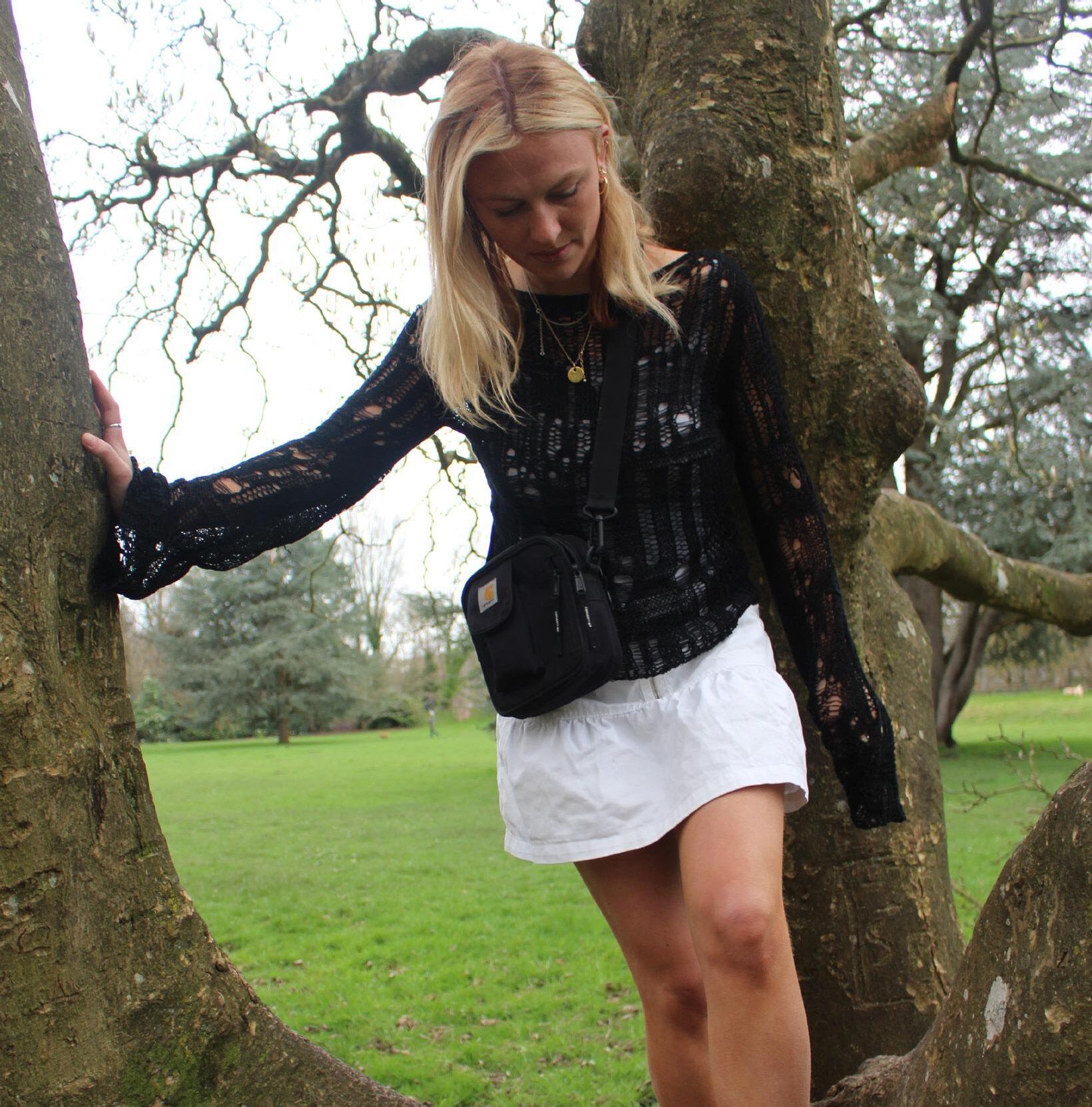
Denim, in all forms, was the star of the show for the latest rendition of runway shows for the SS23 season. Taking cues from the 90s hip-hop era and the early noughties trends, high-fashion brands such as Burberry and Jacquemus embellished classic denim styles to ensure denim continues to make a statement. While the runway looks come at a hefty sum, there are lots of affordable means to replicate the high-fashion trends in accordance with one’s own personal style. Good denim is a durable, practical and timeless fabric suitable for any occasion. Venla, the owner of Daydream Vintage situated in the outskirts of Cardiff, shed some light on her summer staple. The key word was denim. She said, “It comes in so many styles, there’s long denim shorts, denim skirts and baggy denim jeans…I love denim.” Daydream Vintage (@daydreamcardiff) has a significant presence on Depop, as Venla believes it to be the most professional and curated secondhand clothing site. Through scouring vintage retailers you’ll be sure to find your perfect denim staple.

Now for crochet, arguably one of the most versatile fabrics the fashion industry has to offer. Originating from Arabia as a modern art form in the early 19th-century, retailers worldwide have put their own spin on the material in order to make intricate clothing with a handmade feel. Again, crochet stormed this year’s fashion weeks, encompassing an array of colours and design on camis and dresses. But it doesn’t only serve effortless style, the fabric is renowned for its versatility. Crochet is lightweight and simply perfect for the hot weather. It can also double as a beach cover up and will make for a great piece to take on your holidays, ensuring precious room remains within your suitcase. Crochet has been around for quite some time, meaning that secondhand stores are a gold mine to find unique pieces.


The utility vest - a perfect sleeveless summer jacket. This essential may seem a bit ‘out there,’ but with utilitarian-wear surging across the fashion world this year, we are seeing a return of work attire being worn in a casual fashion. The shapeless, formless and practical sub-genre of clothing is perfect for all genders, and makes for a stylish addition to wardrobes. Ruba Mohammend, the shop manager at Flamingos Vintage in Cardiff, defines the gorpcore movement as “anything with pockets”. The key words being “practical, comfortable and stylish.” Ruba said the unisex nature of the clothing means it can be worn by anyone, and she makes a point of dressing her mannequins in mens and womenswear combined. In Flamingos Vintage, the utility jackets start from £18.
The crossbody bag has shifted from a purely practical piece to a mainstream must have. Coined by some as the ‘anti-theft bag’, it is a multipurpose bag which optimises the safety of possessions. If you find yourself lucky enough to go abroad this summer, despite solid efforts to fit in with the locals, the likelihood is that you, a tourist, will be spotted a mile off. Being robbed in a foreign country is both more likely and incredibly inconvenient; this is where the crossbody bag comes in. There are a range of stylish crossbody bags at your disposal, for £45, the Carhartt WIP essential sidebag is a national favourite. However on Depop, Vinted and Ebay similar models are available at a lower cost and still do the same job.


According to InStyle magazine, ‘Birkenstocks are back’ but truth be told they never really left. The classic sandal has been a summer staple for generations and the brand continues to engineer their footwear in line with consumer trends while staying true to their original designs. They launched their best-selling vegan sandal range in 2016, and seven years on, new colourways and premium hardware has meant the recognisable everyday shoe has stayed relevant. Why are they the people’s favourite? Other than their tasteful design, they are durable and can be paired with anything. The price of the shoe, if bought brand new, varies from £55-£105 but they are an undoubtedly worthwhile investment.
With these five seasonal staples in mind, summer has never looked so hot.
In 2019 Sheffielder Nic Hardy decided to completely upheave her life. She quit her IT management job, sold her house, and took the plunge into becoming a full-time adventurer. She’s since journeyed all over the UK, and performed impressive feats such as climbing the 282 Munro mountains in Scotland, and walking the Cumbrian Traverse in the Lake District. In her bid to escape the drudge of the 40-hour working week, Nic has amassed over 17K followers on Instagram (@adventurer.nic) where she makes a living documenting her travels.

I lived frugally, most nights were spent sleeping under canvas with the odd hostel or Airbnb booking thrown in for an occasional treat. I hiked 95 routes which totalled over 2,000km and ascended over 100,000 metres of vertical ascent (Everest is 8,849 metres).
How hard was it to get into influencing?
I actually never set out to be an outdoors influencer. I started organising Instagram meet-ups in 2018 as a way of meeting new people that I could enjoy my new passion of hiking with. It all basically led to my Instagram account growing and then brands became interested in the community I was building and offered me sponsorships.

Do you ever solo travel?
space and I feel far more vulnerable in a city after dark than I ever do in a rural area.
How do you stay safe as a solo woman?
I carry a Garmin In Reach Mini when I’m alone in remote areas as a safety precaution. Pressing a button on this device would automatically dispatch mountain rescue to my location and I’m able to send messages to family using it, even in places where there is no phone signal. I always make sure I carry plenty of food and water, a first aid kit and sufficient clothing for the conditions. I always share my route with family and friends prior to embarking on a solo adventure.
What’s your proudest achievement?
What initially motivated you to quit your job and travel?
I decided my body needed a physical challenge rather than a mental challenge for a change. I decided to back myself, to have confidence that I was employable and that I’d be able to get a job again when I got back - but I never looked back. I haven’t been in full time employment since I left in 2019.
How did you manage financially when you were just starting out?
I do. I’ve just returned from an 88-mile walk along the Norfolk coast which I hiked alone over four days, including some night hiking with a head torch. The outdoors is my safe
The day I climbed the Inaccessible Pinnacle on Sgurr Dearg, which is part of the Black Cuillin mountain range on the Isle of Skye. We started the day in ‘the clag’* with zero visibility but once we topped out on the ridge we experienced a pure temperature inversion**. It was like being above a sea of marshmallows, with the neighbouring jagged peaks pushing up through the low cloud.
*Clag means low cloud, fog or smog.
**Temperature inversion is a layer in the air in which temperature increases with height.
blogger Nic Hardy reveals how she ditched the tech for a life on the trek
by Almha MurphyNic Hardy on the peak of Black Cuillin mountain, Isle of Skye.
“The outdoors is my safe space, I feel far more vulenerable in a city”

I can find myself flowers
Search for these blossoms to get your summer started the right way
Tune in, swot up
Find your outdoor fix with recommended books & podcasts
When you want to give your eyes a break from screens but are still looking for some entertainment, a new podcast might be the way to go. From adventure and fashion to mental health and mindfulness, whatever your passion, we’ve got you covered. All of these recommendations can be accessed on all major podcast platforms.




The Dirtbag Diaries

Sit around the campfire and listen to a story of adventure… Hosted by writer Fitz Cahall, The Dirtbag Diaries are a collection of stories told by ordinary people around the world who love wild adventures. One of these eclectic real-life experiences might inspire you to go out and do the same.

Relax with Animal Facts
Winding down after a long day? Relax with Animal Facts is the perfect podcast to chill out to. Each episode, Stefan Wolfe focuses on the profile of a different creature. You can revel in your new knowledge of the animal kingdom, or even just appreciate the soothing voice and beautiful soundscapes.
Overheard at National Geographic
If you’re in the mood to learn about something completely new, why not try Overheard –a podcast which follows the wide range of conversations had within National Geographic’s headquarters, with writers, photographers and explorers. Recent episode topics include origami, sharks, and butterflies!

Happy Place
Happy Place has taken the podcast world by storm over the last few years, and for good reason. Fearne Cotton chats with a wealth of famous faces about what happiness means to them, with the open and honest conversations not shying away from topics such as mental health.
Travel, Adventure & Road Trips | Jits into the Sunset
Tania and Adam are travel filmmakers who live on the road, travelling around Europe in their campervan called Jits. In their podcast, the pair host conversations with likeminded people who have chosen this alternative way of life, talking about their adventurous experiences and what they have learned along the way.
WORDS TO FIND:

Kick off your walking boots and get your thinking cap on with our GORP wordsearch. There are 12 words to find
wordsearch
Now that the cold winter is finally behind you, there is an endless selection of new flowers for you to discover during the summer season.
Have a look for these beauties out and about, all of these flowers can be spotted throughout the UK and Ireland.
Lavender - There are over 100 types of lavender. It relieves stress and induces sleep. Lavender oil has antiseptic properties that can help soothe wounds and burns.


Honeysuckle - These flowers can grow up to 30 feet. It grows on the moist, welldrained soil in areas that provide enough sun. The colour of the flowers changes from white to yellow after successful pollination.
Teasels - On a winter walk, you might have dismissed these usually brown spiky plants as nothing but a nuisance. However, between July and August, these flowers show their true colours with a beautiful purple flower.
Sunflower - Our next entry needs little explanation. The sunflower’s incredible height and eye-catching colour makes it a staple of the British landscape. They bloom in August, so keep a lookout near the end of summer.

Foxglove - These flowers may look enticing but they are actually poisonous if you eat them. So, admire them without getting too close. They are in bloom throughout the first half of summer.
A GORP mindset does not necessarily only come from grappling with mountain climbing or sweating buckets on a hike.
You can feel a connection to nature by putting your feet up and immersing yourself in a new world by picking up a book.

Here are some recommendations to get you started, or to add to your ever-increasing ‘to read’ pile:
KOOK – by Chris Vick
This novel encourages you to release your inner surfer and experience a summer of love. When teenager Sam arrives in a coastal town in the middle of nowhere, he doesn’t think adventure is on the horizon. However, when pro-surfer Jade introduces him to the sport, his obsession with catching a legendary wave takes hold.

Nowhere for Very Long: the Unexpected Road to an Unconventional Life – by Brianna Madia

For everyone who has dreamed of ditching the nine to five and exploring the world in a minivan, Brianna did exactly that. The memoir chronicles her experience of travelling across the American West in a worn, but reliable, van called Bertha.
Journey to Eternity: and More Stories of (Mis)adventure, on Rock and in the Mountains – by Wendy Bruere

Don’t be put off by the wordy title. Journey to Eternity includes the stories of 13 adventurers from across the world. One even has a close shave with an AK47. Bruere includes a diverse selection of perspectives, and takes you to some of the most beautiful locations through her visual descriptions.
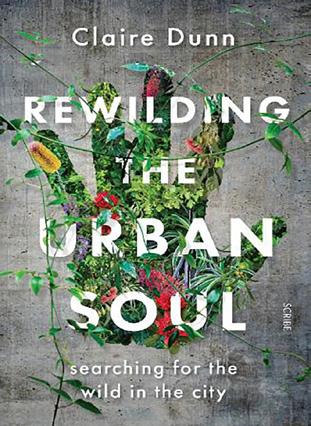
In this explorative memoir, Claire Dunn considers if we can actually feel connected to nature while living in a concrete jungle. She spent a year living off-grid in a wilderness survival program, only to return to an overcrowded city where everyone is glued to technology. Is it too late to change our ways?
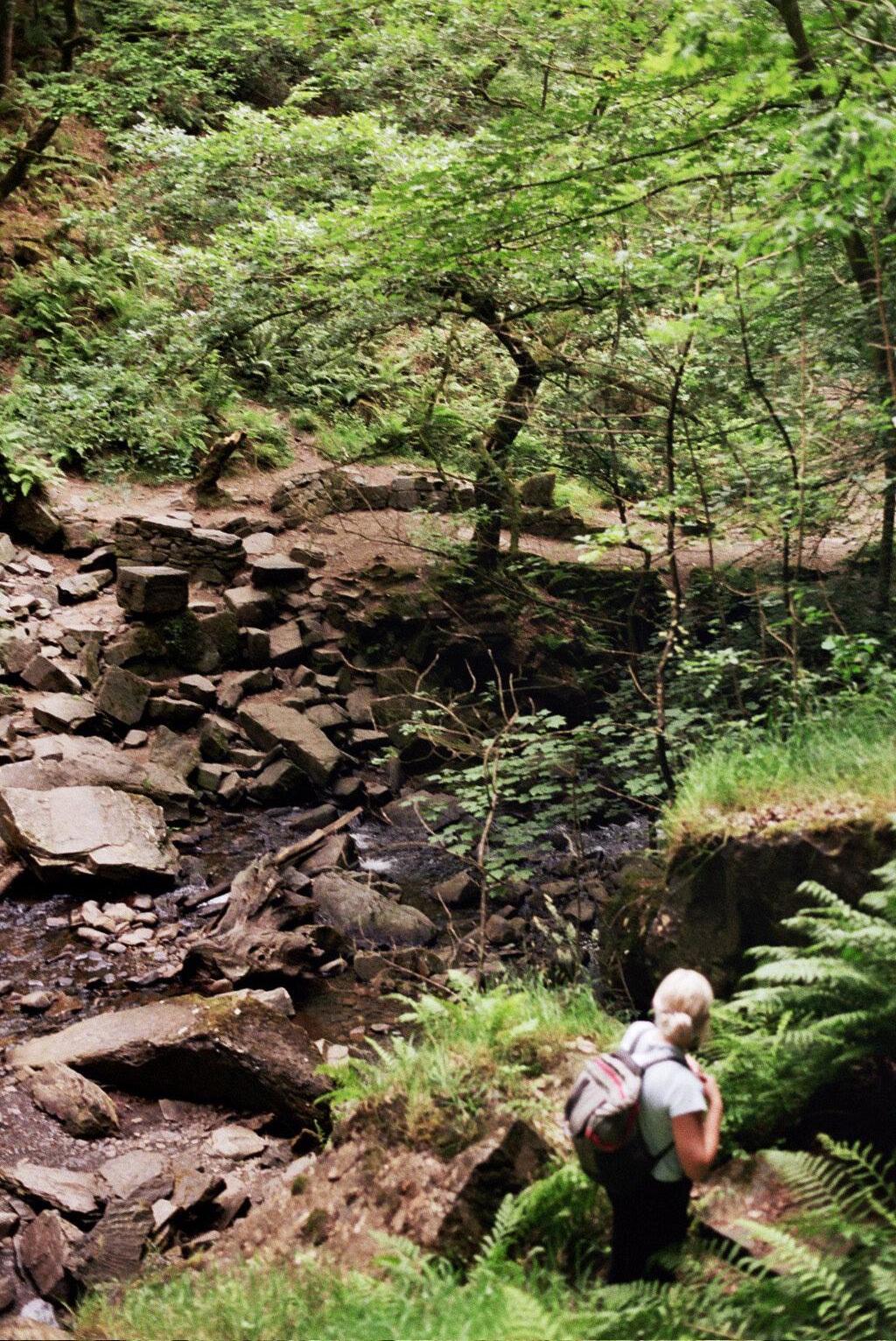
Timothy – by Verylin Klinkenborg
Based on a true story, this novel is told from the perspective of the tortoise who lived in naturalist Gilbert White’s garden for 13 years in the 18th- century. If you’ve ever wondered what it might be like to be a tortoise, this is the book for you. Even if you haven’t experienced your mind going down that particular rabbit hole, it is still a charming and unique read.

This sweet but simple trail mix is great for a summer’s day and for fueling all of your activities. This trail mix embraces the summer spirit with fragrant dried mango and toasted almonds.
Ingredients:
35g dried mango
50g dried apricots
25g unsalted almonds
20g unsalted cashews

Optional extras: dried coconut
To begin, toast your almonds. Heat your oven to 180°C, gas 4. Evenly spread the almonds on a baking tray and roast for 15 minutes.
After roasting your almonds, combine all the nuts and dried fruit together in your favourite tupperware for the ideal on-the-go snack or pick me up!

Add some dried coconut for an extra summer flavour!
WANT MORE GORP?
GET THE LATEST ON TRAIL SNACKS, GORP GEAR AND OUTDOOR EVENTS STRAIGHT INTO YOUR INBOX WITH OUR FREE MONTHLY NEWSLETTER.
 Photo credit: Manon Jones
Photo credit: Manon Jones
Festivals can be costly to the environment, so here’s how to be a carefree (not careless) reveller...

 Words by Maggie Gannon and Manon Jones
Words by Maggie Gannon and Manon Jones
The sun is shining, your favourite artists are performing and you’re surrounded by your friends; festival season is one of our favourite times of the year for many different reasons. The combination of live music, the British summer, camping in a field with thousands of new faces, and our close ones around is the perfect recipe for some life-long summertime memories. The UK music festival season see over 800 different events take place across the country, in 2019 alone a total of 28.5 million people attended a musical festival in the UK. From techno and electronic music, to up and coming pop, there is a festival suited to everyone. With holidays and ventures outdoors becoming more expensive, festivals can be a more sensible money saving choice as payment plans and deals become more common. But sadly, along with this season comes masses of waste and a detrimental impact on the environment. In the UK, festivals generate 25,800 tonnes of waste each year, that’s over two-thousand double decker buses; and over 60% of this waste goes straight to landfill. Fields are left filled with broken and abandoned tents, masses of plastic waste and over £800,000 is spent to clear up this aftermath.
Are sustainable festivals realistic?
There’s no denying that festivals have contributed massively to unneeded waste across the last few years. However, thanks to great efforts by dedicated and innovative companies and festival organisers, there are now solutions to enable everyone to enjoy festivals, while keeping the environment in mind.

Glastonbury, one of the most renowned music festivals in the world, made great strides to being more sustainable as they decided to ban plastic bottles completely in 2022. They revealed that in 2017, over 1m plastic bottles were sold to around 200,000
festival goers. This works out at around five plastic bottles per festival goer, a frightening cost of not having a plastic bottle policy.
Green Man Festival, located in the Welsh Brecon Beacons, sticks to its name by working with Help Refugees and the Newport to Calais Aid Collective. Following the festival, any unbroken camping gear that is left unwanted, alongside spare food, goes straight to refugees across the world. This savvy initiative not only just supports the people who need it, but also ensures the equipment avoids landfill.
Where does all the waste go?
Based in Nottingham, Flame UK has partnered with some of the UK’s biggest music events to manage the build up of waste that is produced. It’s mission is to ensure that the waste collected is saved from landfill and transported to sites that are able to recover and recycle it instead. Flame UK argues that, “The most sustainable thing a festival can do is reduce the amount of waste that is produced, before looking to recycle.” Reusable bottles, compostable cutlery and food boxes are just some of the things you might have seen popping up at music events. However, the typical festival goer isn’t always concerned about what bin they’re putting their grub in, even if they are trying to do the right thing. That’s where companies like Flame come in, as they sort the waste accordingly allowing it to be recovered or recycled, rather than heading for landfill.
We asked Flame what the hardest item to dispose of at the moment is. Their answer? Vapes. Discarded vapes are now becoming more and more common especially at festivals.
“ Festivals generate 25,800 tonnes of waste each year, and over 60% of this waste goes straight to landfill”Photo Credit: FlameUK waste management
OVER 100 MILLION
250,000
tents





SUNDAY GOES STRAIGHT TO LANDFILL



68% OF WASTE



Unfortunately, due to their lithium batteries, they’re even trickier to dispose of and need to be handled by the professionals. Flame explained that once vapes are collected, “They’ll be taken to a recycling facility that can remove the battery for it to be recycled and then recycle the hard plastic casing into a new material.”
By festival organisers taking active steps to make their festivals more sustainable, it means more of us can enjoy our favourite festivals without the environmental impacts resting heavy on our conscience. The Association of Independent Festivals (AIF) is the UK’s leading festival body that currently represents over 90 festivals. Some of which are pretty big names in the scene like Boardmasters, Boomtown, and Truck Festival. Every year they host ‘Festival Congress’ - a big talk in February aimed at uniting organisers on topical issues in the industry before the main season starts. This year a big focus was energy usage and fuel sources. CEO of AIF John Rostron chatted to us about some of the challenges facing the industry.
John discussed how although many festivals are committed to trying out other forms of renewable energy to run their events as opposed to diesel, the availability of them is still very limited. Without action from the government, this is something
difficult to commit to. He added that the two barriers are “price and scaling”. Renewable energy is expensive, and hard to scale up for the size of events some of these festivals are putting on. Another key issue, in relation to energy, is the artists themselves. John said more conversation needs to be had between organisers and artists in terms of what is really needed to put on their show. He added that currently, about “40% is the difference between what artists are wanting and what they actually need” in terms of energy usage.
Looking forward to a brighter future, 2023 marks a time where the risk of a festival being cancelled is far less than it has been in previous years. This means, research in the industry can be carried out, and change can be monitored to see what effect it has on our environment. John has one major aim for the end of this year, figuring out “Is spending the weekend at a festival better than if you all stay at home.” Given the stats we have just given you this may sound crazy. In reality though, if you picture a dance tent with some lights, a DJ, and a couple hundred people dancing, and then consider what every single one of those people would be doing instead on a regular evening - having their lights on, boiling a kettle, watching Netflix, showering - is it so crazy a thought?

Adopting small changes to our habits at festivals can help lessen the impact on the environment and ensure that we can enjoy this season guilt-free. Check out our five steps to becoming a festival goer this summer.
Fortunately, today there is a reusable equivalent for many festival essentials. From water bottles to cutlery, and funky drinks cups. Taking a reusable water bottle with you and researching the water facilities at your chosen festival is key, as over 10m plastic bottles are wasted each year at UK festivals. Head to One Green Bottle for an array of different water bottles in multiple colours and sizes before you head to your next festival.
2
Upgrade your tent
250,000 tents are left at UK festivals collectively each year, and most of them end up in landfills. Upgrading your tent to a stronger and more reliable tent will help to reduce this number as most tents are left behind as they are damaged or completely broken. Having a tent that you, and maybe your friends, have all invested in means you can continue to take it home with you after your trips. It’s not only more sustainable but will also save you money in the long term.
Many of us may be travelling a fair distance to our festivals this summer and the way we choose to get there will have an impact on the environment. Travelling there as green as you can is highly important, especially if you’re attending a more sustainable event. Car sharing with your friends, using public transport like Big Green Coaches, or choosing a festival that is an easy distance from your home can all help to reduce the overall environmental impact of festivals, as well as your own carbon footprint.
It’s very easy to get over-excited for festivals, but this can quickly lead to overpacking and overbuying. It’s important to be conscious of how much you are consuming and buying before a festival as it can easily lead to waste. Across UK festivals, 400 tonnes of food are wasted each year. When you’re stocking up on food, drinks, and everything else you think you might need for your big weekend, be mindful of how much you are taking and question whether you need everything.
Switching up your beauty products can make you a better festival goer. Using shampoo and conditioner bars can be a great way to be more conscious, as these have no plastic packaging and a longer usage life. Both are a great alternative for buying mini sizes of our favourite beauty products. LUSH offers an array of shampoo bars for all hair types for £9, and a travel-friendly tin holder for £3. Likewise, opting for a cleaning butter as your makeup remover rather than makeup wipes or cotton pads can also be a wiser choice. The Body Shop’s camomile sumptuous cleansing butter is a great option for only £6!
Dancing to your favourite artists in a busy crowd is not so fun when littered with plastic




For six-time UK national record holder Georgina ‘George’ Miller, reaching depths of up to 65 metres doesn’t faze her in the slightest. Even when diving deeper than any recreational scuba diver, the owner of the freediving school Aquacity, in Cornwall, actually finds it relaxing. So what is this extreme sport?
Freediving is simply when you rely on holding your breath underwater until resurfacing. As simple as this sounds, it takes a lot of training to do this safely and efficiently. Once mastered, it’s a great way to explore the UK coastline.
Throughout July to August is a perfect time to go and see blue sharks circling the southwest coast.

For now, let’s jump into George’s fins and dive deep into the life of a freediving professional.
Everyone is a beginner at some point; do you remember your first dive?
It was amazing! I made my way down to the sandy bottom and was blown away by how quiet and beautiful it was— then I suddenly thought: “Wow this is kinda deep,” and rushed back to the surface.
What exciting things can you see around the UK freediving?
The UK has a bad reputation for being cold and murky — it does have its moments, but mostly it’s amazing. Divers who have learned in tropical places come here and

are blown away by the abundance of life— it’s like a garden of kelp and so many fish. My favourite are seals, but it’s also amazing to get to see blue sharks and dolphins, plus we often see whales from the boats and massive bluefin tuna later in the summer.
Being based in Cornwall; how do you combat the cold even in the summer?
It’s not always easy, but that is part of the charm. I have actually grown to love the cold. One trick is to try and swim as often as I can in just a swimsuit— so it makes putting on a wetsuit feel very luxurious. Mechanically we respond better to the slightly colder water as it slows your heart rate down and helps conserve oxygen, so it’s an advantage for freediving.
So, how do you control your breathing in order to dive so deep?
Learning the science behind breathing is important for freediving along with safety and techniques, but it’s mostly about relaxation. The more relaxed you are the longer you can hold your breath.
What happens if someone panics?
I t’s so important to never dive alone. Always dive with someone who is qualified and understands freediving. Freediving is a really safe sport because if you are feeling uncomfortable you can’t really get anywhere deep. It’s when you relax that you see results, so it’s super important to take your time. It’s very individual, a few people come to us to learn because they are nervous, but sometimes the greatest fears can become the greatest passions. Learning calming breathing techniques are good skills
to carry into all aspects of life.
Have you had any scary moments when freediving?
I saw a tiger shark when my friends were spear fishing out in the Bahamas – it was pretty cool, but it was probably sensible to get back into the boat as it was definitely hunting.
What is the most surreal freedive experience you have had?
Without a doubt diving with humpback whales! They were floating around between 15-30 metres, and we had the very great honour of swimming down to see them. It’s incredible when you can see a creature that big looking right at you and kind of understanding. Absolutely breath-taking and when they vocalise you can feel the sound in your chest rather than hear it.
Now here is the question everyone is wondering: How deep have you dived and how long can you hold your breath?
I’m really interested in competing so the deepest I have dived is 65 metres and the longest breath hold is a bit over seven minutes. I absolutely love the feeling of deep diving, when you free fall into the blue and you start to lose the edges of yourself, it’s just pure flow state and connection to the ocean.
Your ultimate top tips for beginners? Take a course and never freedive alone. It’s an incredible underwater world and a wonderful community – you will love it!

“The longest I’ve held my breath is just over seven minutes”George in her (underwater) jungle Photo credit: Daan Verhoeven
The saying “you can’t be what you can’t see” has gained popularity around the globe in relation to many marginalised groups. It means, simply, how can someone aspire to be something if there is not a role model to show them it can be done? Inaccessibility for members of the LGBTQ+ community may not be the first thing that springs to mind, particularly when you think about the rights that they have been denied, but its effects are more serious than you might expect. According to statistics from joint research by Public Health England and National LGBT Partnership, only 42% of LGBT people meet the level of physical activity required for good health, compared to 59% of people in the general population.
This could be put down to several factors. First, LGBT exclusive events are often limited to clubbing in gay bars and
getting drunk. Don’t get me wrong, that stuff is great, but queer people do, surprisingly enough, have interests outside of alcohol.
As a queer person with a love for the outdoors myself, I have struggled to find ways to socialise with other LGBT people beyond drinking events. The inclusion of safe spaces for LGBT people in the last decade has, however, massively improved. From football clubs to hiking groups, there is an increasing variety of spaces for queer people to experience the outdoors and connect with eachother. In the US, the market for queer outdoor activity seems to be booming.
There are countless groups of surfers and outdoor influencers grinning with pride flags draped around their shoulders on social media. This may be because the sun is shining more often than in the UK, but this does mean there are less opportunities for queer people to interact with people like them in the outdoors.

Another reason for queer people not participating in outdoor activities stems from a fear of being treated differently from others. Queer Out Here, an LGBT inclusive walking group, started in 2020 in an attempt to combat this problem. Founder Ailish Breen says that having this space allows both newcomers and seasoned outdoor explorers to feel safe. “You don’t have to be on your guard for microaggressions or harassment; you can just enjoy your day, maybe make new friends, maybe learn something about the outdoors or about yourself,” they said. “It can be daunting getting started in the outdoors; finding your own way into it if you haven’t been hiking all your life takes some courage,” Ailish added.
Groups like Queer Out Here can feel validating as well as important for improving physical and mental wellbeing. Ailish hopes that outdoor groups will “educate themselves on how to be welcoming to queer folk and how to be allies in the outdoors.” They hope that “queer folk [can] have joyful experiences in the outdoors together”, and can feel safe wherever they choose to explore.
People to follow:
@pattiegonia
A backpacking drag queen who travels the world with a specialism in snow sports
@atheneclub
A network which hopes to connect young women from all backgrounds to the outdoors

@outdoorlads


A group encouraging men from the LGBTQ+ community to enjoy nature in a comfortable environment
Visit: Queer Out Here
Walking and hiking group with regular events each month
Why representation matters in making the great out there inclusive for everyone
 Words by Tianna Williams
Words by Tianna Williams
“Something just touched my foot!” A statement proclaimed from even the most confident sea swimmer when venturing into the UK’s coastal waters. Another less dignified approach involves a scream followed by clambering onto the nearest thing possible, normally a fellow swimmer, in an attempt to elevate ourselves out of the water. Don’t worry we’ve all been there. Even though the UK doesn’t have a track record for deadly marine life unlike our Australian sister, we do have a new epidemic of a less stealthy ocean dweller. Behold, the jellyfish.
Although to the naked eye they are brainless blobs of jelly, they strike fear in any human at the thought of getting a nasty sting. According to the Marine Conservation Society there has been a record-breaking number of jellies bobbing around our favourite beaches, but where have they appeared from and why are they here?
Martin Attrill, marine biologist, and lecturer at Plymouth University, helped bring clarity to this murky discovery. When asked why there are suddenly so many jellyfish, Martin was actually fighting their corner, “Jellyfish are an entirely natural component of the UK’s plankton and are important predators.” He continued to say the reason we notice them is because they drift with currents and winds, and if they come across land, (like a bay), they can get stuck leading to numbers building up.
According to Martin, some jellyfish like cold water and others a warmer temperature. This means they arrive from either the northwest waters, or come up from the southwest, but this all depends on the winds and currents. “This is why you get years where some are common and other years when a different species dominates,” he said.
Due to the temperature and climate drastically changing, we may need to be on the lookout for a more dangerous jellyfish when we go out for a paddle. Martin said, “When there have been strong southwesterly winds and currents, we can get rarer and more dangerous species such
as portuguese man o’war . These are quite different from the normal jellyfish and are a colony of many different individuals that each have different roles.”
A colony of jellyfish does not sound like a fun mix to get tangled up with. Even though this deadly species is a rarer sighting, there are six main species that have chosen the UK as their top coastal spot. These include the compass jellyfish, moon jellyfish, barrel jellyfish, lion’s mane jellyfish, blue jellyfish, Portuguese man o’war
When thinking of a jelly’s main predator, turtles are at the top of the list. With an increase in jellyfish will this mean we won’t have to travel to Greece to see our favourite chilled out ocean dweller?
“It is possible,” said Martin. “The main turtle
associated with jellyfish, (they eat them), is the leatherback and there are sightings of this turtle each year on the west coast.”
If spotting jellyfish is more your thing, then according to Martin the west coast of Scotland and Cornwall tend to be the best spots. When in the water with a jellyfish it is always best not to touch them just in case - several species like the lion’s mane can give a nasty sting but, if you are sensitive, you can get a reaction from all species. The dome shaped head of a jelly is harmless but if you see one in the water it is best to swim in front of it, if you can’t avoid it, rather than behind as some species can trail stinging tentacles several metres behind them.
Overall, jellyfish are relatively harmless and when venturing into the sea be prepared to be sharing the waters with other marine life.
South Cornwall lifeguard supervisor, Abby Mundell, gives us her top tips on how to treat a jellyfish sting
Q: So, what do you do when you get stung by a jellyfish?
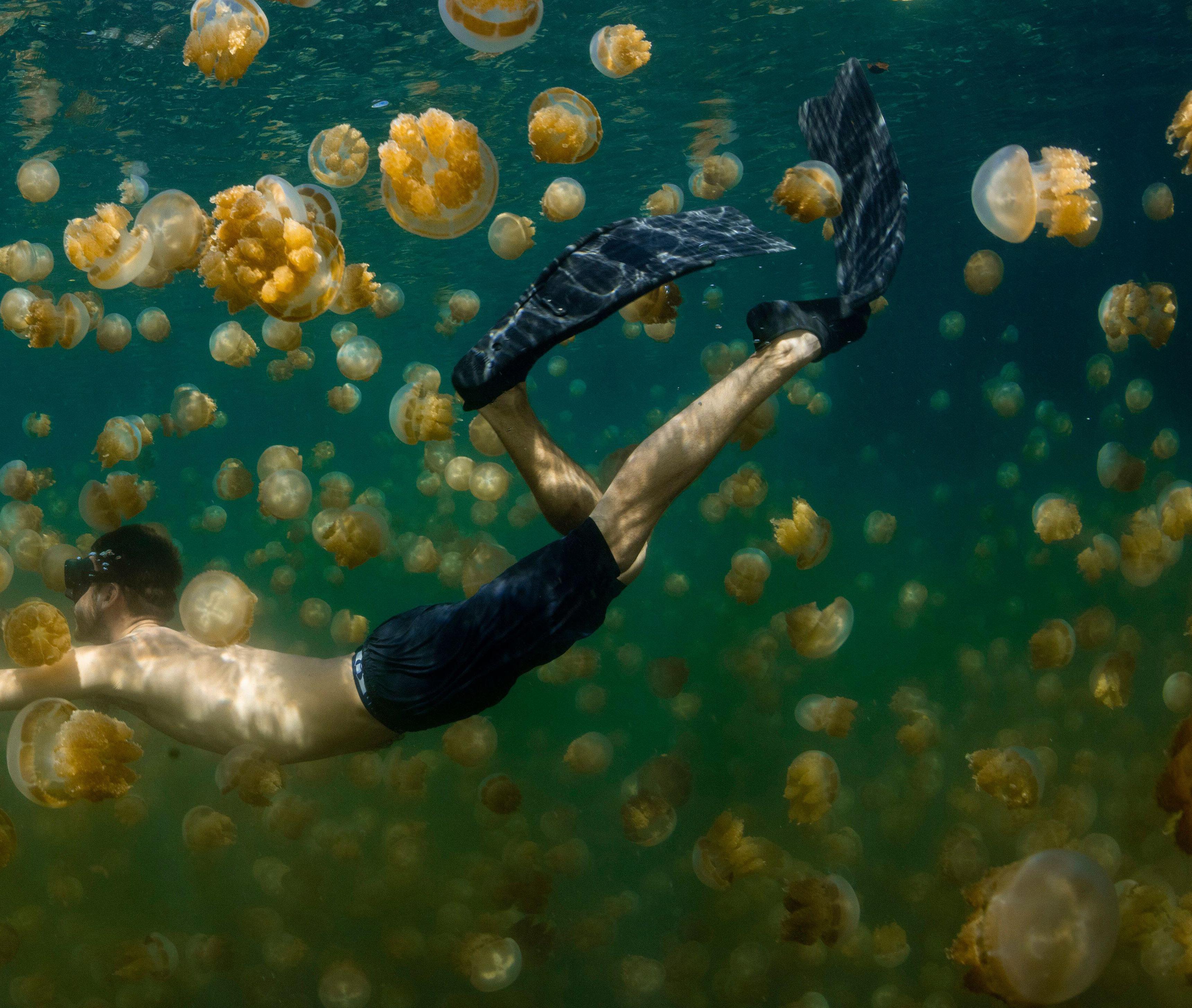
Abby Mundell: It’s very boring but just rinse it in sea water. Make sure it is not fresh water though as it can make it worse.
Q: Why not fresh water?
AM: Ice and cold water can cause the stingers to release more venom and cause more pain.
Q: We’ve all seen that Friend’s episode with Monica getting stung by a jelly, does peeing on it actually help?
AM: Well, we don’t get taught about that in lifeguarding! The best thing to do is not rub on it as the stingers can release more venom. Some people say to use vinegar, but I don’t think that’s great.
The best action to take is to rinse with salt water, remove stingers with tweezers, and then apply an antihistamine cream.
Lifeguards are trained to help with these situations, and if it gets worse, please seek medical help.
“They are brainless blobs of jelly, they strike fear in any human”
1

Don’t throw the paper away. Save it for the next time you need to start a campfire.

2 3
Take five pages of GORP mag and roll them into
Collect your kindling and logs (preferably oak), build your fire. When your campfire is set, burn the corner of your knot, carefully place it in the center of your campfire. Gently blow on your fire to grow your flame.
Before starting a campfire it’s crucial to consider your surroundings, most importantly check for permission from the landowner. Most public areas are owned by the local council, so contact them if you plan to make a campfire away from your home. If permitted, campfires need to be at least 25 feet away from any structure and anything that can burn. Clear away any dry leaves and sticks, overhanging low branches and shrubs. Campfires are easier to contain if they are kept small. Make sure to only use as much wood as you need, and place stones around your campfire to prevent your flame spreading.
Never use gasoline or other flammable or combustible liquids to start your fire, and attend to the campfire at all times. Left alone it can grow into a damaging fire. Having a bucket of water or a shovel nearby is crucial if a dangerous fire starts to spread.

Make sure the fire is completely out before leaving the site/land.
All advice comes from the National Fire Protection Association.